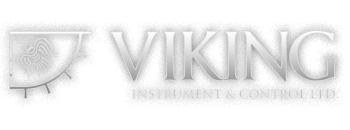Many tubing and fittings are designed to safely handle both high pressure and high temperature conditions with hazardous and corrosive fluids. In order to achieve proper performance, it is essential to ensure correct assembly and installation for high pressure fittings and tubing. Various industries require the applications of high pressure fittings and tubing particularly chemical and petrochemical plants, oil and gas refining, electric utilities, pulp and paper mills and laboratories including nuclear power plants. Not only must the high pressure fittings be used correctly but it must correctly mate with the tube or pipe and prepared in a manner to ensure maximum fitting performance. It therefore becomes important for the end-user to be knowledgeable of the following:
- Awareness for the key installation procedures and installations
- Familiarization with pipes, tubes and fittings including their key characteristics, assembly procedures and safety precautions
- Key installation procedures including selection, cutting, deburring and bending
- Familiarization with high pressure fittings and the differences between products offered by manufacturers
Care in handling tubing to achieve a proper seal with the fitting
- Not only should tubing be ordered according to exact specifications but it is essential to follow safety precautions in preparation assembly to protect both the tubing and fitting characteristics.
- Always use tubing that is compatible with the fitting or valve materials. Stainless steel tubing will work best with stainless steel fittings.
- A smooth and unscathed tubing surface is essential for a proper seal with the fitting. It is important to avoid dragging the tubing from the storage racks.
- When working with coiled tubing, do not uncoil more than what is necessary to prevent surface hardness.
- Tubing must be cut squarely to maximize fitting functions. A tube cutter will be better than a hacksaw since it will ensure appropriate cutting for the tubing material.
- Burrs on the tubing after cutting should be deburred prior to installation. Excessive burring of the tubing’s outside diameter may damage the fittings during assembly.
- For applications requiring high pressure, high safety factor or severe services, the nut of high pressure fittings should be tightened until the tube does not rotate. A wrench could be used to tighten the nut.
- A presetting tool assembly will allow installation of the high pressure fittings and tubing in hard-to-reach locations. Each presetting tool is supplied with its own set of instructions from the manufacturer.
- Use products suitable for the application like high pressure fittings with outstanding protection against pressure, shocks and vibrations.
- Make sure that the system is not pressurized when tightening or loosening a fitting or valve connection.
- When relieving or bleeding system pressure, do not loosen the tube fitting nut. Use the appropriate devices intended for bleeding or relieving pressure.
- Do not exceed product temperature specifications.
- Do not exceed maximum allowable working pressure/temperature combinations for tubing assembly.
- When the application involves hazardous and toxic fluids, it is important to exercise a lot of caution during installation, operation and maintenance.


